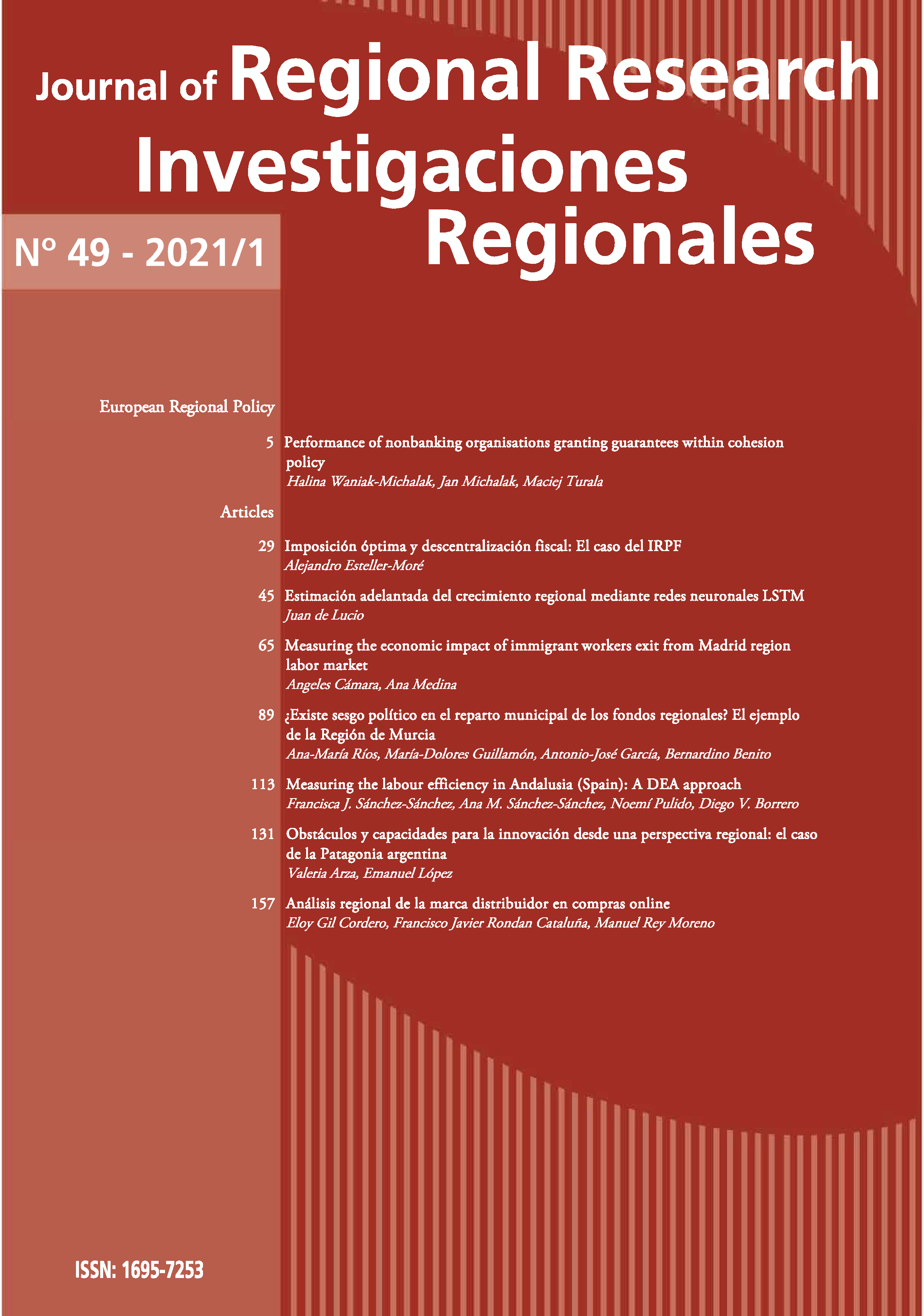Performance of nonbanking organisations granting guarantees within cohesion policy
DOI:
https://doi.org/10.38191/iirr-jorr.21.008Palabras clave:
nonbanking organisations, guarantees, performance, regional development, cohesion policyResumen
El debate sobre la política de cohesión se ha intensificado recientemente debido a las crecientes tensiones en el seno de la UE y requiere constantes aportaciones en relación con los distintos instrumentos que se aplican. En Polonia, se adoptó un mecanismo único para la distribución de garantías: las garantías se distribuyen principalmente a través de las ONG (organizaciones no bancarias que conceden garantías - NOGG).
Así pues, el artículo pretende investigar la relación entre el nivel de desarrollo regional, la experiencia de las organizaciones no bancarias que conceden garantías y su rendimiento, lo que da lugar a observaciones
y recomendaciones con respecto al funcionamiento y la evaluación de las garantías como instrumentos de la política de cohesión. Hemos utilizado una regresión de panel para 156 observaciones que cubren 26 NOGG en Polonia.
Los resultados confirman que existen asociaciones positivas entre el nivel de desarrollo regional, el tamaño de la NOGG (medido con el capital de la garantía) y la experiencia y algunas medidas de rendimiento financiero. Afirmamos que un requisito previo para el alto rendimiento de estas organizaciones es asegurar que tengan un nivel adecuado de capital de garantía y experiencia. Pedimos que en el futuro se realicen investigaciones comparativas en toda la UE que permitan comprender mejor el rendimiento de los distintos mecanismos de distribución de garantías.
Descargas
Publicado
Número
Sección
Licencia
Aquellos autores/as que tengan publicaciones con esta revista, aceptan los términos siguientes:
En el momento de aceptar la publicación de sus artículos en Investigaciones Regionales / Journal of Regional Research, los autores acceden a utilizar la licencia Creative Commons CC BY-NC. IIRR/JRR es una revista abierta que permite a los autores retener el máximo control sobre su trabajo. Los autores aceptarán utilizar la licencia Creative Commons Attribution-NonCommercial. Esta licencia permite a cualquier persona copiar y distribuir el artículo con propósitos no comerciales, siempre y cuando se atribuya adecuadamente la atribución del trabajo a la revista y a los autores.

